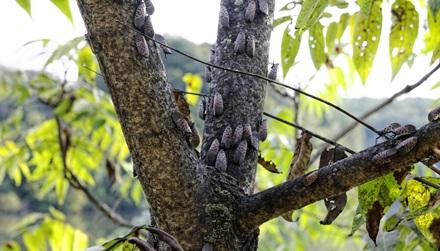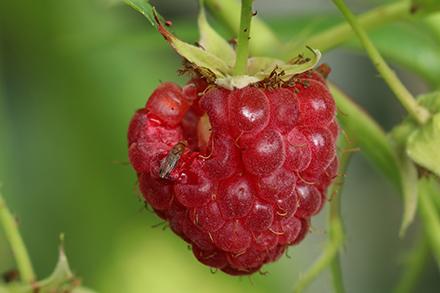Long-term Solutions for Controlling Invasive Pests

Spotted Lanternfly infestations are spreading throughout many Mid-Atlantic states. ARS researchers are working to curb their population growth with biocontrol measures through the ARS Area-Wide Pest Management Program. (Getty Images).
Agricultural Research Service (ARS) scientists are helping farmers, producers and ranchers, while working to combat pests that wreak havoc on native plants, animals, and ecosystems through ARS’ Area-Wide Pest Management Program (AWPM).
Currently, ARS scientists are developing six active AWPM projects to address issues involving crops, insects, invasive plants, and weeds that are spreading throughout the United States and damaging crops.
These projects include improving honey bee health, managing insect pests like the spotted lanternfly and spotted-wing drosophila, biocontrol of the invasive water hyacinth, a weed control program dubbed “Getting Rid of Weeds (GROW),” and soil pest management in strawberry and vegetable cropping systems.
To further enhance their research, ARS scientists are employing innovative technologies like drone and satellite imagery to potentially lower the use and cost of pesticides for farmers and ranchers.
“Managing pests on an area-wide basis can offer long-term solutions to pest problems,” said Steve Young, former ARS National Program Leader in the Crop Production and Protection National Program. “When successfully implemented, the methodology could prevent major pest outbreaks, while providing a more sustainable and permanent control procedure for pests.”

Spotted Wing Drosophila, a variety of fruit fly, sits on a ripe raspberry next to a gnawed hole. Spotted Wing Drosophila is a major pest species in America and Europe that ARS scientists are working to control. (Getty Images).
Since 1994, AWPM programs have garnered several significant successes. For example, ARS researchers used mating disruption to reduce the codling moth population spreading through apple orchards. This AWPM project reduced the pest population and eliminated the use of organophosphate insecticides – saving apple growers money while protecting their orchards.
Along with this vital research, AWPM programs improve cooperation between ARS researchers, farmers, ranchers, stakeholders, and universities – along with federal, state and local agencies – in a combined effort to confront invasive pests.
By: Tami Terella-Faram, ARS Office of Communications

